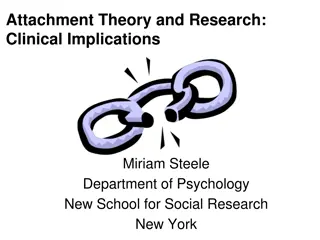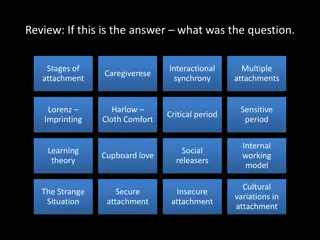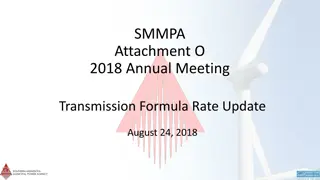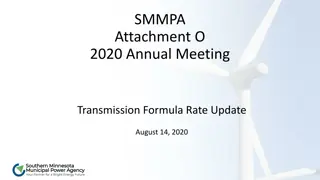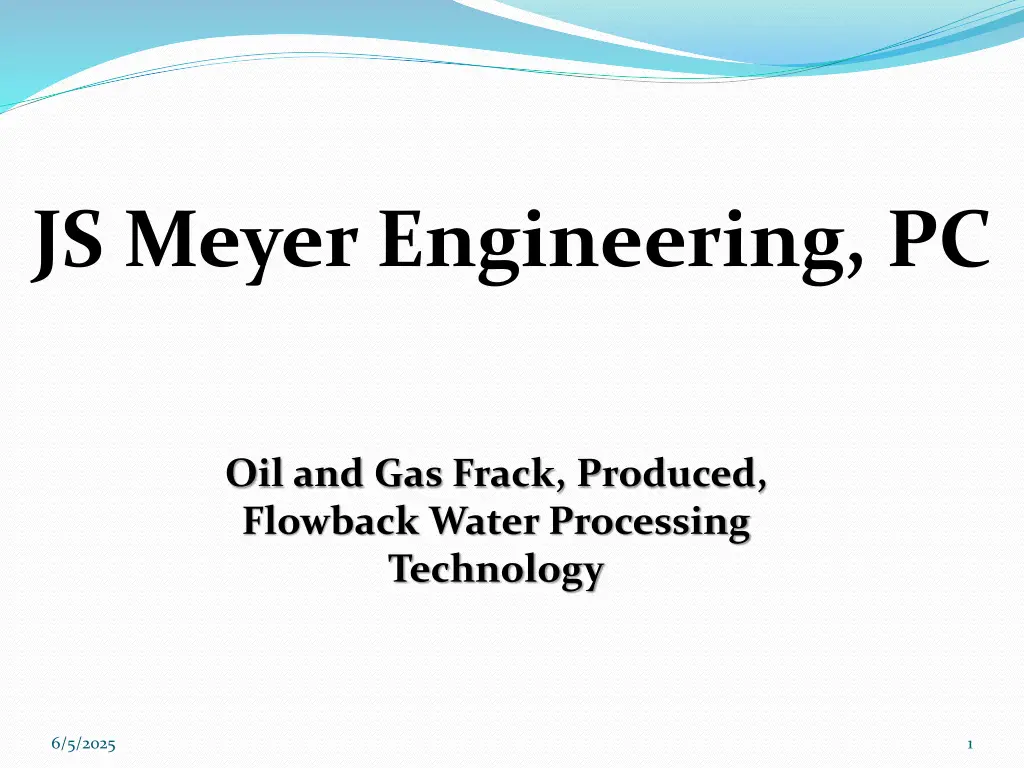
Innovative Water Processing Technology for Oil & Gas Industry
Explore a cutting-edge water processing technology designed to address environmental concerns in the oil and gas industry. Learn about the impact of produced water, challenges in existing treatment processes, and the optimal treatment solution. Stay informed and stay ahead in the industry evolution.
Download Presentation

Please find below an Image/Link to download the presentation.
The content on the website is provided AS IS for your information and personal use only. It may not be sold, licensed, or shared on other websites without obtaining consent from the author. If you encounter any issues during the download, it is possible that the publisher has removed the file from their server.
You are allowed to download the files provided on this website for personal or commercial use, subject to the condition that they are used lawfully. All files are the property of their respective owners.
The content on the website is provided AS IS for your information and personal use only. It may not be sold, licensed, or shared on other websites without obtaining consent from the author.
E N D
Presentation Transcript
JS Meyer Engineering, PC Oil and Gas Frack, Produced, Flowback Water Processing Technology 6/5/2025 1
Why are we here? To inform the EPA that this technology exists. Regulations are being formed and thought it best to communicate our technology in a timely fashion. We believe it can have a major positive impact on the industry. 6/5/2025 2
Well Operation Overview Drilling Wastewater 2,400 1,100,000* Gallons per well Flowback Water 210,000 2,100,000* Gallons per well Fracturing Fluid 50,000 to over 10 million* Gallons per well Well Long-term Produced Water 200 900* gallons per day per well for life of well EPA-821-R-15-003, March 2015, Technical Development Document for Proposed Effluent Limitations Guidelines and Standards for Oil and Gas Extraction * All Values are typical 6/5/2025 4 Updated 7/1/2015
Natural Gas Shale Basins in the US http://www.businessinsider.com/bid-prices-double-in-pennsylvania-natural-gas-auction-2010-1 6/5/2025 5
Produced Water Market 20 billion barrels per year (US) 77 billion barrels per year (Worldwide) 3.2 trillion gallons of water per year requiring treatment 6/5/2025 6
Existing Proposed Treatment Process (by others) Off-Site Deep Well Injection Well Filtration Evaporator Sludge to Disposal 6/5/2025 7
Issues with Existing Proposed Treatment Process (by others) Fresh water needs are not reduced High energy demand evaporation Significant capital investment Estimated equipment cost >$20M Significant cost/gallon of water treated Estimated cost/gallon of water treated: $18.50/barrel Requires centralized plant Evaporator Deep well injection No reduction in truck traffic! Requirement of transporting waste water is not alleviated 6/5/2025 8
Optimal Treatment Process Produced water treated to EPA drinking standard with exception to dissolved salt levels Solids Disposal New Well UV Multimedia Filtration Organics Removal Well Neutralization Disinfection System Dirty Water Feed Chemical Softening Thickener Initial Filtration Ba/Sr Removal Solid/Liquid Separation Chemical Softening Chemical Softening Filtration Solids Recovery Solids Disposal 6/5/2025 9
Our Results Untreated Treated Deionized Water 6/5/2025 10
Well Analysis: Flowback/Frac (All Values in ppm unless otherwise stated) Flowback Water 0.86 ND 0.15 1.76 ND 1750 ND 0.79 ND 3.4 337 30 0.08 0.16 Frac Water Treated Frac Water ND ND 0.179 0.007 ND 0.361 ND ND ND ND 151 0.05 ND ND 0.001 4 5020 ND ND ND 1.2 0.7 ND Drinking Water Standard 0.2* 0.01 -- 2 0.004 Aluminum Arsenic Boron Barium Beryllium Calcium Cadmium Chromium Copper Iron Potassium Magnesium Manganese Molybdenum Mercury Sulfur Sodium Lead Antimony Selenium Silicon Strontium Zinc * Secondary drinking water standard 0.23 ND 0.31 58.65 ND 280 ND ND ND 13.11 10.16 21.33 0.42 ND ND 2.2 593 ND ND ND 2.62 49.68 0.21 0.005 0.1 1.3 0.30* 0.05* -- 258 5095 ND ND ND 20.8 68.2 ND 250* (sulfate) 0.015 0.006 0.05 -- -- 6/5/2025 11
Well Analysis: Produced Water (All Values in ppm unless otherwise stated) Tote 330 Tote 756 Stage 1 Treated Sample Stage 2 Treated Sample Finished Sample Drinking Water Standard TOC <1 <5 <1 <5 <1 Aluminum Barium Boron Calcium Iron Lithium Magnesium Manganese Potassium Sodium Strontium Sulfur <0.05 4.83 1.78 24.1 <0.02 55 8.72 0.092 414 <0.05 3.1 1.29 17.4 <0.02 50.4 7.77 0.0117 1,050 34,600 36.6 3.14 <0.25 0.561 0.873 5.74 <0.1 1.24 0.558 0.022 760 36,200 3.32 13.3 0.2* 2 -- 5,560 13.2 44,000 181 237 2,860 36 1,170 36,700 15,300 1.5 5,440 13 43,100 180 232 2,770 34 1,150 38,200 15,000 <5 0.30* 0.05* 47.3 3.02 -- 250* (sulfate) * Secondary drinking water standard 6/5/2025 12
Mobile Treatment Facility 6/5/2025 13
Optimal Treatment Process Analysis All inorganics were reduced to levels that comply with the EPA drinking water standard Radioactivity Alpha radionuclides were removed in the chemical treatment, however, only 60% of beta radionuclides were removed in the first step. A proven additional step will be used to remove beta radionuclides to acceptable levels. Additional tests must be conducted to confirm this. 6/5/2025 14
Competitive Analysis Electro Coagulation (Halliburton) Distillation Carbon Absorption JSM Process 6/5/2025 15
Electro Coagulation (Halliburton) Uses electricity to coagulate colloidal materials. Generates limited CL2 and base for precipitation of divalent metals. Leaves dissolved solids in the material and requires concentration prior to deep well injection. Adv > 1st stage treatment of frac water is suitable for 5X recycle. Con - > Need large amount of power at well site > Transportation and deep well injection of the resulting brine > Chlorine formation at ppm levels > Hydroxide formation which are difficult to filter Cost Electricity $- 2.00 Transportation Deep Well Injection $- 3.00 Subtotal Water recycle Salt recovery Total Cost/BBL $- 10.50 $- 15.50 $+ 2.00 $+ 1.40 $- 12.10 6/5/2025 16
Distillation (MVR) Ships product to fixed plant for evaporation. Water product is shipped back to well field reuse. Breakeven with purchase of fresh water. Deep well injection required for waste brine. Con - > Need transportation of all material off well site > Does not provide for recycle at well site > Extended transportation for water return Cost Evaporation Transportation Water return Deep well injection $- 3.00 Water recycle Salt Recovery $- 3.00 $- 10.50 $- 2.00 Subtotal $- 18.50 $+ 4.00 $+ 1.40 $- 13.10 Total Cost/BBL 6/5/2025 17
Carbon Absorption (Lewis) Uses carbon bed to absorb 50% of metal ions. Remaining water and ions go to distillation followed by deep will injection. Deep well injection is reduced by 50%. Con - > Produces two waste streams > Takes large number of beds to remove metal ions (capital costs) > Need transportation of some material off well site > Limited success on high concentration produced water > Extended transportation for water return Cost Deep well injection Operational costs Transportation 1. Water recycle Salt recovery $- 1.50 $- 10.50 $- 3.00 $- 15.00 $+ 2.00 $+ 1.40 $- 11.60 Subtotal Total Cost/BBL 6/5/2025 18
JSM Technology Uses manganate ion to form an activated manganese compound which reduces the concentration of the metal ions upon precipitation with carbonate. Adv- >Reduces metal ion concentrations to drinking water standard. > Eliminates deep well injection > Recovers high concentration metal ions > No transportation costs. > Minimizes solid material disposal costs > Recycles of water at well site Con - > None Cost Operational costs $- 5.50 Subtotal Water recycle Salt Recovery Total Cost/BBL $- 5.50 $+ 2.00 $+ 1.40 $+ 2.10 6/5/2025 19
Barium and Strontium Recovery Barium Removal Step Barium Solids Barium 83% Strontium 13% Calcium 4% Strontium Removal Step Strontium Solids Strontium 80% Calcium 13% Barium 7% Value of Solids ~ $1.00/barrel of water treated 6/5/2025 20
Summary Catalytic Precipitation Carbon Abosrption Electro Coagulation Distallation/MVR Water Recycle at Site YES NO NO LIMITED Metal Recovery YES NO NO NO Salt Recovery Deep Well Injection YES YES YES YES NO YES YES YES Cost -$ 2.10/BBL -$13.10/BBL -$11.60 -$12.10 6/5/2025 21
Technologies Not Evaluated (not suitable for Produced Water) Electro Dialysis Limited to low TDS material Fouling Resistant Membranes Divalent ions cause fouling Ultra Filtration Removes solids only Reverse Osmosis Limited to low TDS material (limited use for Step 1 FRAC water) 6/5/2025 22
Conclusion JSM Process Eliminates deep well disposal Reduces fresh water usage Further enables recycling Low capital cost Low cost/gallon of water treated Environmentally friendly 6/5/2025 23







